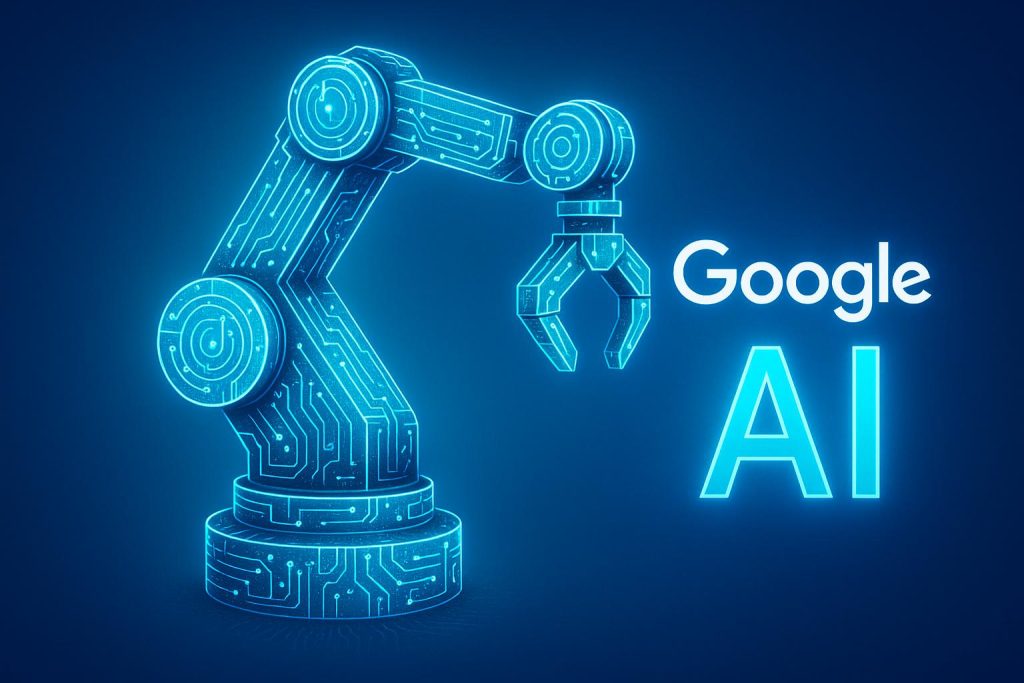Listen to the article
Google unveils an expanded suite of AI tools in 2023, enhancing accessibility, security, and automation for developers and businesses seeking to harness AI’s transformative potential.
Artificial Intelligence (AI) has emerged as a transformative force across numerous industries, enabling businesses to enhance operational efficiency, elevate customer experiences, and tap into new growth avenues. Among the leading providers in this field, Google stands at the forefront, delivering a comprehensive suite of AI tools designed for developers, businesses, and researchers eager to embed AI capabilities into their applications and workflows.
Google’s AI tools offer a broad spectrum of functionalities ranging from machine learning frameworks to sophisticated natural language processing (NLP), image and speech recognition, and intelligent automation. These resources are tailored to accommodate users with varying levels of technical expertise, making advanced AI technologies more accessible without requiring deep-specialised knowledge in data science or machine learning.
One of the flagship offerings is TensorFlow, an open-source machine learning library developed by Google that enables the construction, training, and deployment of machine learning models. TensorFlow supports a wide array of tasks, from basic linear regression to intricate deep learning models, including image and speech recognition and reinforcement learning. Its scalability across platforms—desktops, servers, mobile devices through TensorFlow Lite, and even browsers via TensorFlow.js—coupled with access to pre-trained models that can be fine-tuned for specific needs, makes it exceptionally versatile for developers aiming to build predictive or intelligent systems.
Google Cloud AI extends this ecosystem by providing cloud-based AI tools and APIs suitable for vision, language, translation, and predictive analytics. Services like AutoML empower businesses to create customised machine learning models without in-depth expertise, facilitating easier integration and upscaling. Cloud AI’s real-time data processing capabilities and robust security infrastructure offer organisations confidence in deploying AI at scale, whether analysing product images, processing natural language, or performing sentiment analysis, thus enhancing decision-making and operational agility.
For conversational AI, Dialogflow stands out as a powerful platform supporting both text and voice interactions, enabling the creation of intelligent chatbots and virtual assistants. Its natural language processing capacity allows for nuanced understanding and response generation, while its integration with popular messaging platforms and multilingual support widens the scope for global customer engagement. Dialogflow’s automation capabilities can significantly reduce human workload in customer service, offering uninterrupted, efficient support around the clock.
In the realm of image and video, Google Cloud Vision AI and AI Video Intelligence deliver robust tools for automated content analysis. Cloud Vision AI facilitates object detection, optical character recognition (OCR), and image categorisation, benefiting industries like e-commerce and healthcare by streamlining image management and enhancing user search experiences. Similarly, AI Video Intelligence extracts insightful metadata from videos, identifying scenes, objects, and speech content, which is instrumental in media management, content moderation, and security applications.
Global communication barriers can be reduced using Google AI Translate, a tool offering real-time translation across over 100 languages, supporting both text and speech. This technology enables businesses to localise content effectively, expanding their reach and improving user engagement worldwide at lower costs by automating what traditionally required manual translation efforts.
Google AI Assistant exemplifies how AI can automate routine personal and business tasks through voice recognition and contextual understanding. The assistant’s ability to seamlessly integrate across numerous devices and perform tasks such as scheduling and customer query handling enhances productivity and operational effectiveness. Customizable features allow businesses to tailor the assistant for specific functions, thereby optimizing customer interactions and internal workflows.
Security is further bolstered by Google AI for fraud detection, which leverages machine learning to detect anomalous transaction patterns and real-time monitoring to prevent fraudulent activity. This ensures safer financial transactions by reducing fraud-related losses and enhancing trust.
Marketing efforts are also optimised through Google AI Ads, which utilise machine learning to automate bid adjustments, audience targeting, and ad personalisation. The result is an improved return on investment and efficient allocation of advertising budgets by delivering the right messages to the right audiences at optimal times.
Finally, Google AI Bots empower businesses to automate customer support across multiple channels using natural language processing, thereby providing consistent, immediate responses, reducing operational costs, and scaling customer service capacity without a proportional increase in human resources.
In summation, Google’s extensive range of AI tools equips developers and businesses with the capabilities to innovate, streamline workflows, and enrich customer experiences. By capitalising on these technologies—from machine learning libraries and cloud-based AI services to conversational agents and intelligent automation—organisations can maintain competitive advantage and drive success in the evolving digital landscape of 2025.
📌 Reference Map:
Source: Fuse Wire Services


